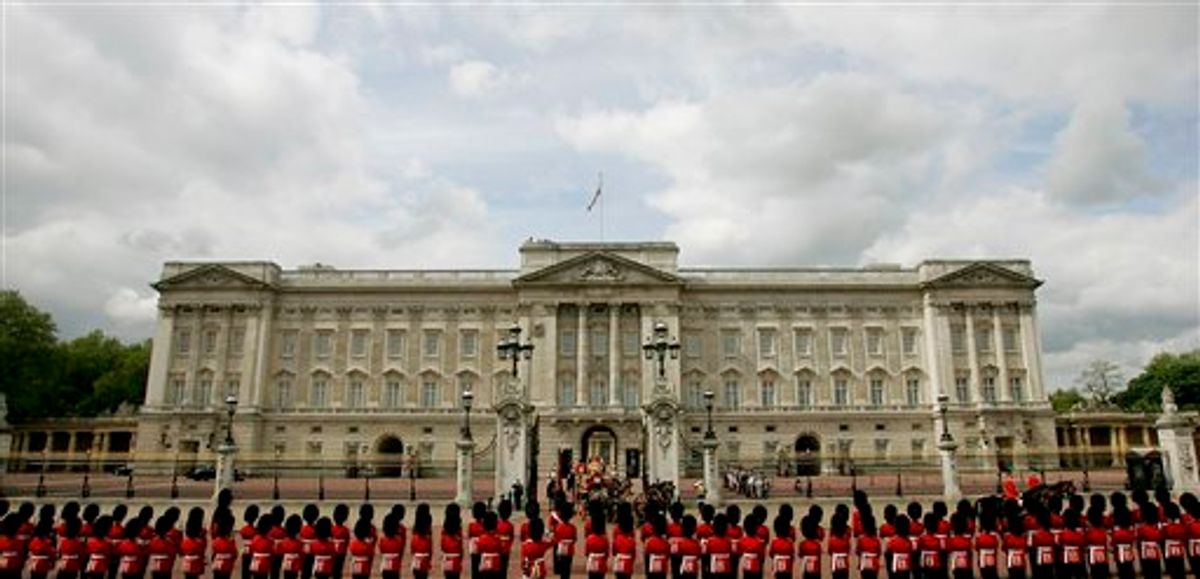A government fund intended to provide subsidized heating to low-income Britons got some interest from an unexpected source: Queen Elizabeth II, who wanted help paying the bills at Buckingham Palace.
The official response, according to documents unearthed by The Independent newspaper, was that the handout might prove to be an embarrassment if word got out. The paper quotes an unnamed functionary as gently reminding the royal household that the money was meant for local authorities, housing associations, and the like.
"I also feel a bit uneasy about the probable adverse press coverage if the Palace were given a grant at the expense of say a hospital," the paper quoted the official as saying. "Sorry this doesn't sound more positive."
The newspaper said royal aides were looking for a way to pay the queen's spiraling utility bills, which had risen by 50 percent to more than 1 million pounds ($1.58 million) in 2004. A letter written that year and addressed to Britain's culture department asked whether the queen could get a community energy grant to upgrade the heating systems at Buckingham Palace and Windsor Castle, the monarch's favorite weekend residence.
Officials were receptive to the idea, but eventually decided against it, the paper said Friday, citing documents obtained under Britain's Freedom of Information Act.
A Buckingham Palace spokeswoman confirmed that royal officials had explored the possibility of getting money under the program, saying it was part of an attempt to reduce both its burden on the taxpayer and improve the palaces' energy efficiency. She claimed the royal household was not initially aware that the money had been earmarked for low-income Britons.
She spoke anonymously in line with royal policy.
The queen's finances have been controversial in the past, with occasional debates about whether Britain's head of state -- whose role is almost exclusively ceremonial -- costs too much. The queen has royal residences across Britain, including Balmoral Castle in Scotland and Sandringham House in eastern England.
Other residences, such as the Palace of Holyroodhouse in Edinburgh and St. James's Palace in London, are used as offices or for functions.
Still, the queen has a reputation for frugality and the monarchy has recently been keen to show it gives value for money. Taxpayers fund the royal household to the tune of 38.2 million pounds ($60 million) a year, which the royal website points out is only 62 pence (less than a dollar) per person.
That amount doesn't include the cost of providing security for the queen and her family.
Expensive or not, word that the royal household had toyed with the idea of trying to get money intended for some of the nation's poorest citizens had a medieval ring to it and the drew the ire of Republic, which campaigns for the abolition of the British monarchy.
The group said the story provided "clear evidence of the contempt the palace has for ordinary people in this country."
The report also raised eyebrows among some of those interviewed on the streets of north London Friday. Nick Bowring, a 23-year-old fitness instructor, said he didn't think the queen should get help paying her heating bills.
"There are people who need it a lot more than she does," he said.
But Ian Laming, a 49-year-old carpenter, disagreed, saying he didn't see why the government advised the palace not to apply for the funds. He said he admired the queen and was pleased when she volunteered to pay more taxes some years ago when royal finances were under scrutiny.
"She helps a lot," he said, explaining that the monarch was big boon to the U.K. economy.
"You just have to walk down to Buckingham Palace to see all the tourists."
------
Associated Press Writer Gregory Katz contributed to this report.
------
Online:
The British Monarchy: http://www.royal.gov.uk/
Republic: http://www.republic.org.uk/



Shares